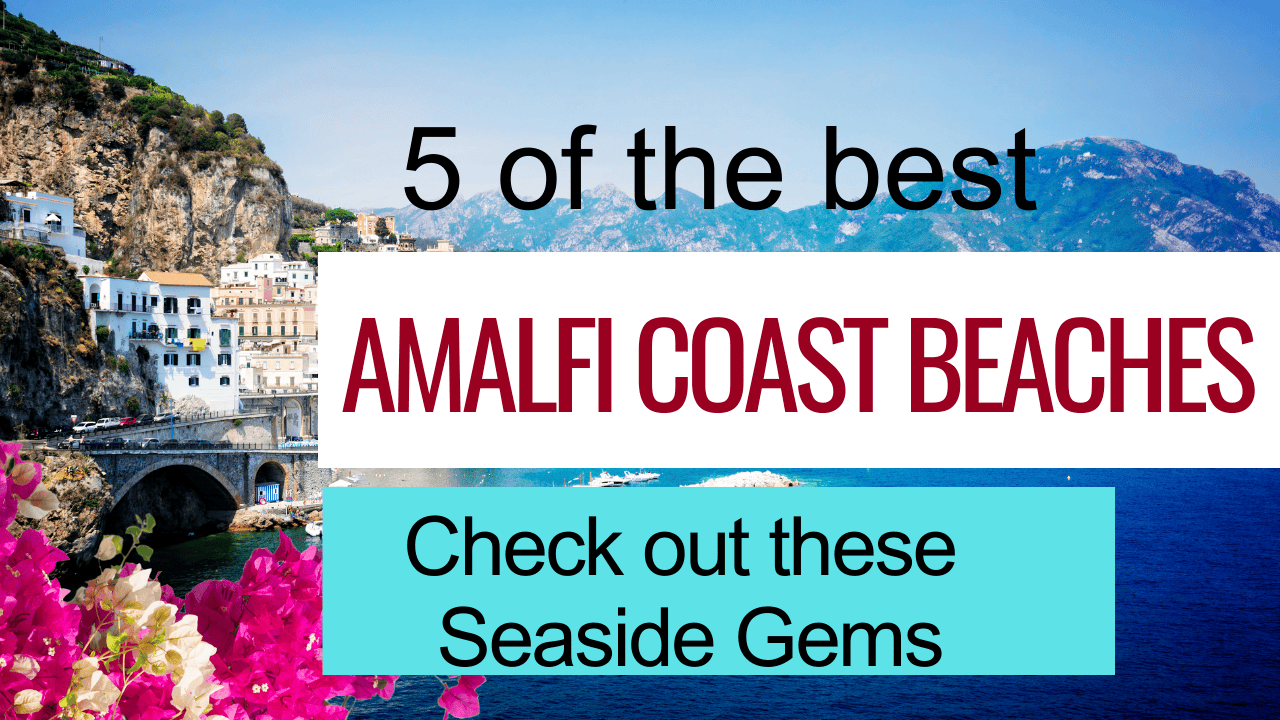Traveling Europe doesn’t have to break the bank. With some smart planning and savvy choices, you can explore the continent’s rich history and culture without emptying your wallet.
You can save big by visiting during off-peak seasons, staying in budget accommodations, and using public transportation.
Off peak season is the best time to visit Europe for anyone on a budget.These simple tricks will stretch your euros further and let you see more amazing sights.
Don’t think you have to skip the popular spots in European destinations.
Even expensive cities like Paris and Rome have plenty of free attractions and affordable food options if you know where to look.
With the right approach, a European adventure is within reach for budget-conscious travelers.
Understanding European Travel
Europe offers diverse travel experiences across seasons and transport options. Planning your trip strategically can save money and enhance your adventure.
Best Times to Visit Europe
The shoulder season in spring and fall is ideal for budget travel in Europe. You’ll find fewer crowds and lower prices on flights and accommodations.
Summer brings warm weather but also peak tourist numbers and higher costs. Winter can be chilly, but it’s perfect for holiday markets and ski trips.
Some cities have festivals or events that affect prices. Research your destinations to find the best balance of weather, crowds, and costs for your trip.
Modes of Transportation in Europe
Europe has many transport options to fit your budget and itinerary. Trains in Europe are comfortable and scenic, connecting major cities and small towns.
The Eurail Pass travel card can save money if you plan to travel extensively by rail.
Budget airlines offer cheap flights between European cities. Book early for the best deals. Buses are the cheapest option but take longer.
Renting a car gives you freedom to explore rural areas but transportation costs and convenience with public transport makes cheap train travel worth considering.
Remember to factor in fuel costs and parking fees if you go the rental car way.
In cities, public transit is often the most cost-effective choice. Many places offer day passes or tourist cards that include transport and popular attractions sometimes at no additional cost.
Budgeting Your Trip
Planning your expenses is key to affordable European travel. Careful budgeting lets you make the most of your money and enjoy your trip without financial stress.
Accommodation Choices
When it comes to lodging, you have many budget-friendly options. Hostels are popular among young travelers, offering shared rooms at low rates.
You can find dorms for as little as €10-20 per night in some cities.
For more privacy, look into budget hotels or guesthouses. These often cost €40-60 per night, depending on the location.
In Greece, family-run pensions provide cheap rooms with local charm.
Airbnb and similar platforms can be cost-effective, especially for longer stays or group travel.
You might find entire apartments for the price of a hotel room.Another thing to consider is house sitting/home exchange for free accommodation during your European vacation.
Daily Expenses In Europe
Your daily costs will vary based on your choices and location. In cheaper countries like Greece, you can get by on €30-40 per day. Switzerland is pricier, requiring closer to €150-200 daily for the cheapest options of everythign.
Food costs can be kept low by:
- Eating street food or at local markets
- Buying groceries and cooking some meals
- Taking advantage of lunch specials
For activities, look for free walking tours in major cities. Many museums have free days or discounted hours. In Greece, beaches and ancient ruins provide low-cost entertainment.
Public transport passes save money in big cities. In Switzerland, a Swiss Travel Pass might be worth it if you plan to use trains often.
Choosing Your Destinations in Europe
Europe offers many amazing places to visit on a budget. Pick spots that match your interests and wallet.
City Highlights
Paris is a top choice for cheap travel
. The city has free museums on the first Sunday of each month. You can also enjoy free walking tours and picnics by the Eiffel Tower.
Florence, Italy is another budget-friendly city. Many of its famous sights, like the Duomo, are free to see from the outside. You can save money by staying in hostels and eating at local markets.
In Germany, Berlin is great for budget travelers. The city has many free attractions, like the East Side Gallery. You can also find cheap eats at street food markets.
Countryside Explorations
Iceland’s natural wonders are perfect for budget trips. You can camp for free in many areas and see stunning waterfalls and glaciers at no cost.
Italy’s Tuscan countryside offers cheap travel options. Stay in small towns and enjoy local food and wine for less. You can explore rolling hills and vineyards on foot or by bike.
Germany’s Black Forest region is budget-friendly. Hike through dense forests and visit charming villages. Many towns offer free public transport to tourists staying overnight.
Finding Affordable Flights in Europe
Cheap flights are key to budget travel in Europe. Smart booking tactics and travel comparison tools can save you big money on airfare.Cheapest flights in Europe are Ryan Air and Easyjet where plane tickets can be as low as € 20.
Flight Comparison Tools
Use websites like Skyscanner, Kayak, and Google Flights to find low-cost options. These tools let you compare prices across airlines and dates. Set up price alerts to catch deals.
Some sites offer flexible date searches. This helps you spot the cheapest days to fly. Try looking at nearby airports too. Sometimes flying to a different city and taking a train is cheaper.
Booking Strategies
Book flights 2-3 months before your trip for the best prices. Midweek flights are often cheaper than weekends. Early morning or late-night flights can also cost less.
Consider budget airlines for short trips within Europe. Be aware of extra fees for baggage or seat selection. Pack light to avoid these charges.
Sign up for airline newsletters to get exclusive deals. Use airline miles or credit card points to reduce costs. Look for student discounts if you’re eligible.
Be flexible with your travel dates. Prices can vary a lot day to day. Try different route combinations to find hidden savings.
Accommodations on a Budget
Finding cheap places to stay is key to traveling Europe on a budget. You have several options that can save you money without sacrificing comfort or safety.
Use hotellook.com to compare hotel prices and find the most affordable hotels.
Hostels and Guesthouses
offer dorm-style rooms with shared bathrooms at low prices. You can book a bed in a mixed or single-gender dorm. Many hostels also have private rooms for couples or small groups.
Hostels often have kitchens where you can cook your own meals to save money. They also organize social events and tours, making it easy to meet other travelers.
Guesthouses are small, family-run accommodations. They’re usually cheaper than hotels and offer a more local experience. You might share a bathroom, but you’ll get a private room.
Vacation Rentals
Renting an apartment or house can be cheaper than a hotel, especially for longer stays or groups. Websites like Airbnb and Vrbo list many options across Europe.
Vacation rentals give you more space and a kitchen to cook meals. This can save you money on food costs.
You can often find rentals in residential areas, away from pricey tourist zones.
Some rentals offer weekly or monthly discounts. This can make them a great choice for slow travel.
Be sure to read reviews and check the location before booking.
Eating and Drinking Economically
Food and drinks can take a big bite out of your travel budget. But with some smart choices, you can eat well in Europe without breaking the bank.
Local Markets and Street Food in Europe
Visit local markets to find fresh, cheap food. In Italy, grab a slice of pizza or a panini from a street vendor. Germany’s street food scene offers tasty treats like currywurst and döner kebabs.
Buy ingredients to make your own meals. Many hostels have kitchens you can use. Pack a picnic and enjoy it in a park or by a landmark.
Street food festivals are great for trying local dishes at low prices. Check city event calendars for these budget-friendly food fests.
Cheap Eats
Look for “menu del dia” deals in Spain or “plat du jour” in France. These daily specials often include multiple courses at a fixed price.
In Germany, visit a beer garden for affordable meals and drinks. During Oktoberfest, you’ll find huge tents serving hearty food alongside beer.
Student areas usually have budget-friendly eateries. Ask locals for tips on where to find the best cheap meals.
Try ethnic restaurants, which are often less pricey than tourist spots. Indian, Turkish, and Chinese places can offer good value.
Avoid eating near major tourist sites. Walk a few blocks away to find more reasonable prices and better quality food.
Free and Cheap Attractions
Europe offers many budget-friendly options for sightseeing. You can enjoy world-class culture and beautiful spaces without spending a fortune.
Museums and Parks
Many European cities have free or low-cost museums. In London, visit the British Museum, National Gallery, and Tate Modern at no charge.
Paris offers free entry to the Louvre on the first Saturday of each month.
City parks are great for relaxing and people-watching. London’s Hyde Park and Paris’ Luxembourg Gardens are perfect spots for picnics.
Some parks host free concerts and events in summer.Check an earlier post on Paris mmonuments and landmarks if you missed it.
Don’t miss out on student discounts. Bring your student ID to get reduced prices at many attractions. Some places offer free entry for visitors under 26.
Walking Tours
Free walking tours are available in most major European cities. Local guides share interesting facts and stories about the area.
These tours usually last 2-3 hours and cover main sights.
In London, join a tour of the historic City or trendy East End. Paris offers walks through charming Montmartre or along the Seine River.
While these tours are free, tipping your guide is common. Plan to give 5-10 euros per person if you enjoyed the experience.
Self-guided walks are another option. Use free smartphone apps or online maps to create your own route.
This lets you explore at your own pace and focus on what interests you most.
Public Transport vs. Car Rentals
Getting around Europe can be done by public transit or renting a car. Each option has pros and cons for budget travelers. Your choice depends on your itinerary and preferences.
Understanding Public Transport
Europe has great public transportation systems. Trains connect major cities quickly and comfortably. Buses reach smaller towns and rural areas.
Public transit is often cheaper than renting a car. You don’t pay for gas or parking. Many cities offer tourist passes for unlimited rides.
Subways and trams make it easy to explore big cities. You avoid traffic jams and parking hassles.
The downside is less flexibility. You’re tied to set schedules and routes. It can be tricky to reach remote spots or small villages.
When to Rent a Car
Renting a car gives you freedom to explore. You can stop at scenic viewpoints or cute villages along the way. It’s great for rural areas with limited public transit.
Cars are handy for groups. Splitting costs can make it cheaper than train tickets for 3-4 people.
Look for deals on smaller cars. They use less gas and are easier to park in tight European streets.
Remember extra costs like gas, tolls, and parking. Some cities charge to drive in the center. Plan your route to avoid surprises.
Maximizing Points and Rewards
Smart use of travel credit cards and loyalty programs can lead to big savings on your European adventure. These tools offer free flights, hotel stays, and other perks when used wisely.
Travel Credit Cards
Pick a card that fits your spending habits and travel goals. Many cards give bonus points for travel expenses.
Some offer sign-up bonuses of 50,000 points or more. This can equal a free flight to Europe.
Use your card for all daily purchases to rack up points faster. Pay off the balance each month to avoid interest charges. Look for cards with no foreign transaction fees to save money abroad.
Some cards include travel insurance and airport lounge access. These perks can save you money and make your trip more comfortable.
Loyalty Programs
Join airline and hotel loyalty programs before your trip. Even if you don’t travel often, these free programs can lead to rewards.
Pick one or two airlines to focus on. This helps you earn points faster. Look for airline alliances to expand your options.
For example, points earned on United can be used on Lufthansa flights.
Hotel programs often have no blackout dates for reward stays. This gives you more flexibility. Some programs let you earn points on dining and car rentals too.
Check for promotions that offer bonus points or miles. These can help you reach reward levels faster.
Cultural Considerations
Respecting local customs and overcoming language barriers are key to a smooth European trip. Both enrich your experience and help you connect with locals.
Local Customs and Etiquette
In Greece, avoid using an open palm gesture as it’s seen as rude. When visiting churches, cover your shoulders and knees. Tipping is not expected but appreciated.
At Oktoberfest in Germany, it’s polite to say “Prost!” before drinking. Don’t stand on benches unless you’re ready to chug your beer. The crowd will cheer you on!
Remember, punctuality is valued in many European countries. Arrive on time for tours and reservations.
Public displays of affection are fine in most places, but use common sense and be respectful of local norms.
Language Barriers
Learn a few basic phrases in the local language. “Hello,” “please,” “thank you,” and “do you speak English?” go a long way.
Use translation apps like Google Translate for quick help. Download offline language packs before your trip to save data.
In tourist areas, many people speak some English. Don’t assume everyone does, though.
Carry a small phrasebook or language card for emergencies. Point to phrases if needed.
Use gestures and body language to help communicate. Be patient and smile – most locals appreciate your efforts to speak their language.
Safety and Travel Insurance
Staying safe and having proper insurance are key parts of a good Europe trip. These steps help you avoid problems and enjoy your travels.
Staying Safe in Europe
Europe is mostly safe, but you should still be careful. Keep an eye on your stuff in busy areas.
Pickpockets like crowded spots like train stations. Use a money belt to hide cash and cards.
Learn some basic words in the local language. This can help if you need help. Know the local emergency number – it’s 112 in most of Europe.
Stay aware of your surroundings, especially at night. Stick to well-lit areas. If you feel unsafe, trust your gut and leave.
Insurance Options
Travel insurance is a must for Europe trips. It covers medical care and lost bags. Some plans even pay if you need to cancel your trip.
Basic plans are cheap and cover the basics. More expensive plans offer more protection.
Look for plans that cover adventure activities if you plan to ski or hike.
Some credit cards include travel insurance. Check your card benefits before you buy a separate plan.
Always read the fine print. Know what’s covered and what’s not. Keep your insurance info with you while traveling.
Frequently Asked Questions
Budget travel in Europe requires smart planning and savvy choices. These common questions cover key strategies for exploring Europe affordably.
What are some strategies for traveling in Europe on a limited budget?
Plan your trip during the off-season to get cheaper rates. Look for free walking tours in cities you visit.
Cook some meals yourself instead of eating out every time. Use discount cards for attractions and public transport.
Try house-sitting or couch-surfing to save on accommodation costs. Take advantage of student discounts if you’re eligible.
Visit free museums and galleries when possible.
Can you recommend budget-friendly accommodation options in Europe?
Hostels are a great choice for budget travelers. Many offer private rooms as well as dorms. Airbnb can be cheaper than hotels, especially for longer stays.
Camping is an affordable option in many European countries.
Some cities have capsule hotels, which offer tiny but cheap rooms. Consider staying in suburbs or nearby towns instead of city centers.
What are the most cost-effective transportation methods within Europe?
Budget airlines often have very cheap flights between European cities. Trains can be economical, especially with rail passes like Eurail.
Long-distance buses are usually the cheapest option but take more time.
Ride-sharing services like BlaBlaCar can be cost-effective for intercity travel. In cities, use public transport or rent a bike to save money.
How can students travel across Europe economically?
Students can get discounts on transport, attractions, and accommodations. Look for youth hostels that cater to students and backpackers.
Many museums and galleries offer free or reduced entry for students.
Consider volunteering or work exchange programs to cut costs. Use student travel agencies that specialize in budget trips.
Take advantage of student rail passes for affordable train travel.
Is it possible to explore Europe frugally without missing out on major attractions?
Yes, you can see major attractions on a budget. Many cities offer tourist cards that include entry to multiple sites.
Some attractions have free days or discounted evening hours.
Look for combo tickets that cover several popular sites. Join free walking tours to see main sights.
Prioritize which paid attractions you really want to see and enjoy free public spaces for the rest.
What are the cheapest countries in Europe to visit for budget-conscious travelers?
Eastern European countries like Bulgaria, Romania,czech republic and Hungary tend to be cheaper.
Portugal and Greece can be budget-friendly in Western Europe. Baltic states like Estonia and Latvia offer good value and so does most countries in Eastern europe .
Parts of the Balkans, such as Bosnia and Herzegovina and North Macedonia, are often very affordable.
Ukraine and Moldova are among the least expensive, but check travel advisories before visiting.
scandinavian countries
Expensive Countries in Europe that budget travellers will struggle are the Scandinavian countries,Switzerland,Luxemburg to name a few.
Switzerland is the most expensive country so it make sense to skip if you are in a budget.



